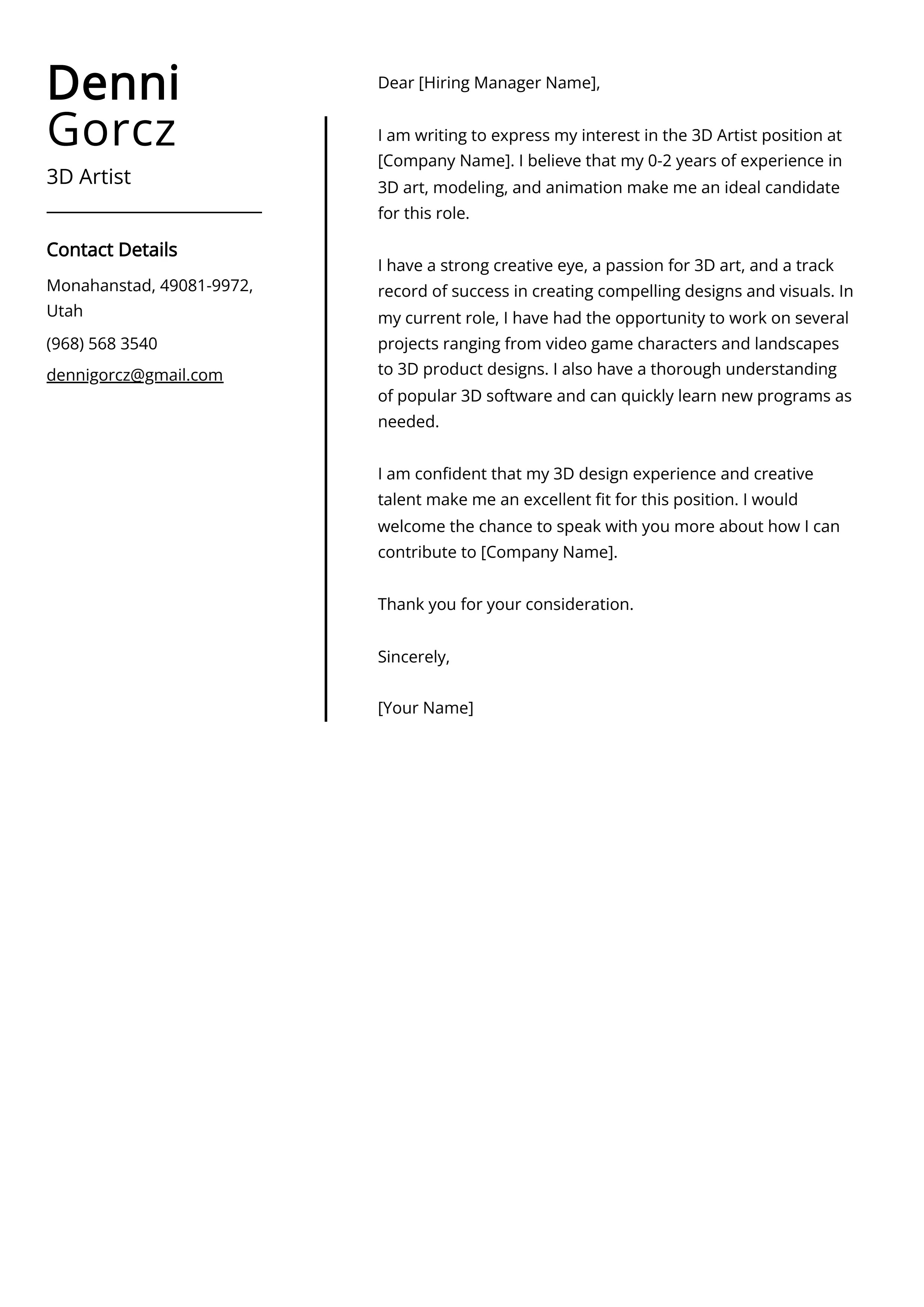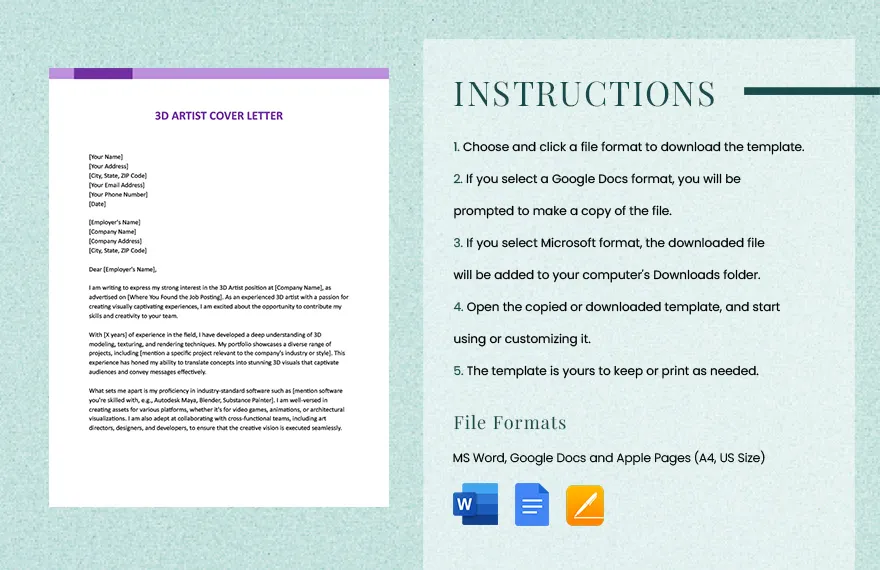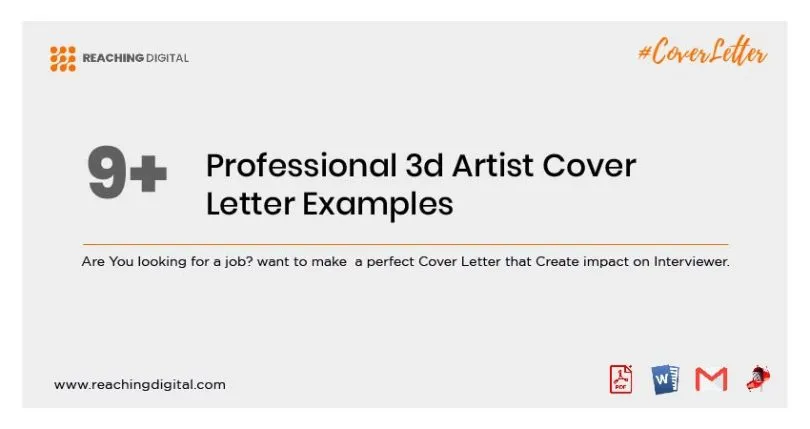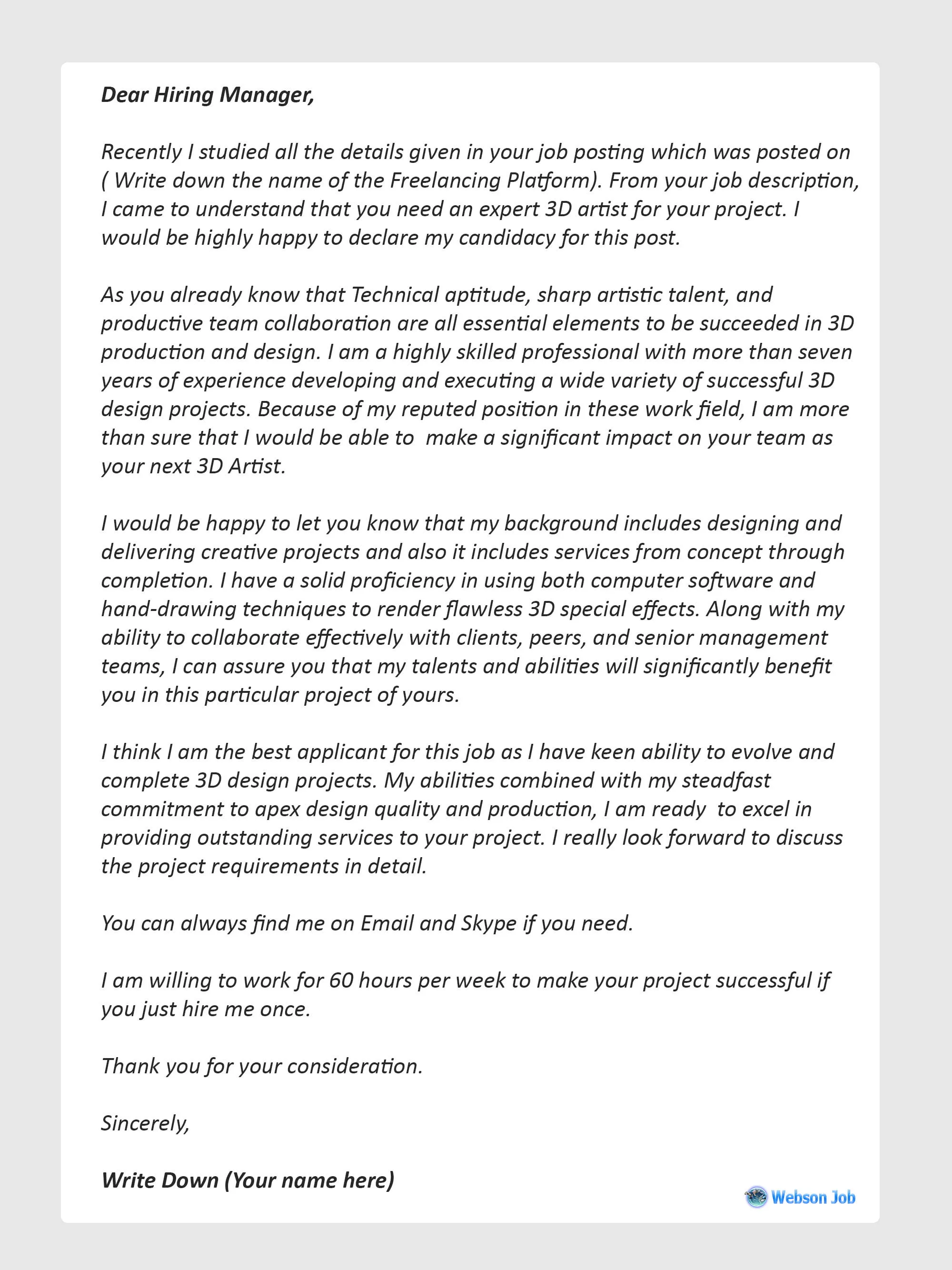Crafting a compelling cover letter is crucial for any 3D artist seeking their dream job. It’s your first chance to make a positive impression, highlighting your skills and experiences beyond your portfolio. A well-written cover letter demonstrates your professionalism, attention to detail, and genuine interest in the position. This guide provides the top 5 tips to help you create a cover letter that grabs the hiring manager’s attention and increases your chances of landing an interview. By implementing these strategies, you can effectively communicate your qualifications and showcase why you’re the ideal candidate for the role.
Highlighting Your Skills
Your cover letter should prominently feature your core skills and how they align with the job requirements. Begin by carefully reviewing the job description and identifying the key skills the employer seeks. Then, craft concise and impactful statements that demonstrate your proficiency in those areas. Don’t just list skills; provide brief examples of how you’ve used them in past projects. This could include modeling, texturing, rigging, animation, or rendering. Use action verbs to describe your accomplishments and quantify your achievements whenever possible. For example, instead of saying “I created models,” say “I created high-poly models that increased client engagement by 20%.” Tailoring your skills section to match the specific requirements ensures that you’re addressing the employer’s needs directly, making your application more relevant and attractive.
Showcase Your Software Proficiency
3D artists need to master various software applications. Your cover letter should specifically mention the software you are proficient in. Include a list of software packages, such as Autodesk Maya, Blender, 3ds Max, ZBrush, Substance Painter, and others relevant to the job. Mentioning your proficiency level (e.g., “expert,” “proficient,” or years of experience) can further enhance your credibility. It’s also beneficial to highlight any specialized software skills that set you apart from other candidates. If a job requires experience with a specific render engine or plugin, be sure to highlight your knowledge of these tools. Being specific about your software expertise demonstrates that you’re prepared and capable of handling the technical aspects of the role.
Mentioning Specific Projects

Provide brief details about specific projects to illustrate your skills and experience. Choose projects that showcase your best work and are most relevant to the job you’re applying for. For each project, describe your role, the challenges you faced, and the results you achieved. If possible, mention the client or company for whom you completed the project. This not only validates your experience but also demonstrates your ability to work on real-world projects. For example, you could state, “In a recent project for XYZ Company, I created a detailed character model that was used in their latest promotional video.” Include links to your portfolio or online project pages, so the hiring manager can easily see your work.
Quantifying Your Achievements
Use numbers and data to quantify your achievements and provide concrete evidence of your contributions. Whenever possible, include metrics that demonstrate the impact of your work. This helps employers understand the value you can bring to their team. Examples include the percentage of projects completed under budget, the number of assets created within a given timeframe, or the positive feedback you received from clients. By quantifying your accomplishments, you transform generic statements into compelling achievements. For example, instead of saying “I improved the rendering process,” you could say “I optimized the rendering process, reducing render times by 30%.” This gives the hiring manager a clear understanding of your capabilities and the benefits of hiring you.
Tailoring to the Job Description
Customize your cover letter to match each job description. Avoid sending the same generic cover letter to every employer. Instead, carefully review each job posting and tailor your letter to address the specific requirements and expectations. Highlight the skills and experiences that are most relevant to the role. Use keywords from the job description throughout your cover letter to signal that you’ve paid attention to their needs. Show that you understand the company’s values and what they’re looking for in a candidate. This personalized approach demonstrates that you’re genuinely interested in the position and have taken the time to understand what the employer is seeking. Tailoring your cover letter significantly increases your chances of getting noticed and making a positive impression.
Demonstrating Passion and Enthusiasm

Expressing your enthusiasm for 3D art and the specific job you’re applying for is vital. Let your passion for the field shine through in your cover letter. Share why you enjoy 3D modeling, what motivates you, and why you are drawn to this particular company or role. Show your genuine interest in the company’s projects or products. A passionate cover letter can make a significant difference, showing the hiring manager that you are not just qualified but also excited about the opportunity. It helps create a personal connection and makes your application more memorable.
Expressing Knowledge of the Company
Demonstrate that you’ve researched the company and understand its mission, values, and recent projects. Mentioning specific details about their work, clients, or industry achievements shows that you have taken the time to learn about them. This research indicates that you’re genuinely interested in working for that company and aligns your goals with their objectives. Discuss any projects or aspects of their work that resonate with you or align with your skills. This demonstrates your understanding of their business and your desire to contribute to their success.
Showcasing Your Portfolio
Your portfolio is the most crucial part of your application, so ensure your cover letter highlights it effectively. Provide a link to your online portfolio or website prominently in your cover letter. Mention specific pieces of work that are most relevant to the job description. Briefly describe those projects, highlighting the skills and techniques you used to create them. Consider including the link at the beginning of your cover letter and at the end, to ensure it’s easily accessible. Mentioning the projects you are most proud of and the technologies you used makes the letter more persuasive. This will give the hiring manager easy access to your work.
Professional Formatting and Tone

Maintain a professional tone and formatting throughout your cover letter. Use a clear and concise language, avoiding jargon or overly complex sentences. Keep your cover letter to a reasonable length, typically one page. Use a professional font, such as Arial, Times New Roman, or Calibri, and maintain consistent formatting. Use proper grammar, spelling, and punctuation to avoid distracting the reader. A professional cover letter showcases your attention to detail and presents you as a serious and qualified candidate. This attention to formatting and tone shows that you are a professional and that you value the importance of being professional.
Use a Clear and Concise Structure
Organize your cover letter logically to make it easy to read and understand. Start with a professional greeting, followed by a brief introduction that states your interest in the position. In the body, highlight your key skills and experiences. Use separate paragraphs for each point you want to make, and use strong topic sentences to guide the reader. End with a call to action, expressing your interest in an interview and providing your contact information. A well-structured cover letter ensures that the hiring manager can quickly grasp your qualifications and the value you bring. A clear structure not only makes the letter easier to read but also emphasizes the most important points.
Proofread for Errors
Carefully proofread your cover letter for any errors in grammar, spelling, and punctuation. Errors can undermine your credibility and make a negative impression on the hiring manager. Use a spell checker and grammar checker, but also read the letter multiple times to catch any mistakes. Consider asking a friend, family member, or career counselor to review your cover letter for you. A second pair of eyes can often spot errors you may have missed. A polished and error-free cover letter demonstrates your attention to detail and professionalism.
Call to Action

Conclude your cover letter with a strong call to action. Express your interest in an interview and provide your contact information again. Thank the hiring manager for their time and consideration. A clear call to action indicates your enthusiasm for the position and your willingness to move forward in the hiring process. By providing your contact information, you make it easy for the hiring manager to get in touch with you. This final step reinforces your interest and ensures that the hiring manager knows how to reach you.
In conclusion, a well-crafted cover letter is essential for any 3D artist looking to make a great impression. By highlighting your skills, showcasing your portfolio, and demonstrating your passion, you can significantly increase your chances of landing an interview. Remember to tailor each cover letter to the specific job and company. By following these top 5 tips, you can create a compelling cover letter that highlights your strengths and helps you stand out from the competition. Good luck with your job search!
